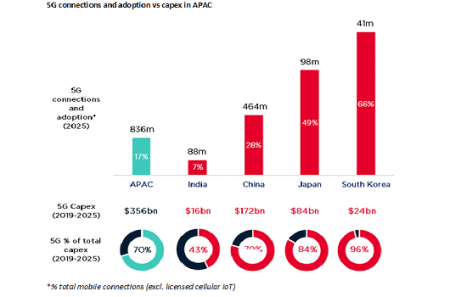The manufacturing sector will be the leading beneficiary of the 5G revolution
The manufacturing sector will be the leading beneficiary of the 5G revolution, according to experts from Omdia. It is estimated that thanks to the popularization of fifth-generation networks, in the next 15 years the industry will gain an additional 4.USD 6 trillion.
The giant of the telecommunications world, Ericsson, believes that by the end of this year 15% of the world’s population will be within the reach of 5G networks. After another five years every second person on Earth will be able to use the new standard. However, the benefits resulting from the popularization of the new standard do not concern only the statistical Kowalski. – 5G may turn out to be more important for the industry than for the individual user. From the perspective of each of us, the fourth generation network already offers sufficient parameters for comfortable use of the Internet – says Jakub Zachara, Head of Innovation and New IT Services at ABB, and then adds: – In industrial applications, the demand for higher density of connected devices, stable real-time information transfer, and the ability to transfer massive amounts of data will be a key support for transformative technologies that will change the industrial picture. It is expected that heavily industrialized and densely populated areas will be the first to reap the full benefits of the new standard. The fifth generation of mobile technology makes it possible to significantly increase the density of mobile communication devices, which is why 5G is being linked to the IoT revolution.
The expert’s words are confirmed by a recent report prepared by Omdia and BearingPoint, which is entitled “5G for manufacturing”. It shows that 5G will be a real revolution for the industry, which is expected to be the biggest beneficiary of the implementation of the new communication standard.
5G equals 5b
The analyst firm’s predictions reach a distant time horizon of 2035, but are very interesting. They show that thanks to the development of 5G networks, the industry will earn about 4.USD 6 trillion. That’s the equivalent of 5.4% of the industry’s total output. From Omida’s report we also learn that four out of ten projects related to next generation communication technology, which have reached the stage of implementation, concern production. And if we expand the meaning of the term “industrial sectors” to include transportation, utilities, energy and mining, only two out of ten will not be related to the broader industry.
Changes resulting from the implementation of the new standard will occur exponentially, rapidly transforming the reality around us. Jakub Zachara gives as an example the technology of autonomous electric vehicles: – IT giants and vehicle manufacturers are already working on solutions of this type. Tesla, Cadillac, Intel or IBM are just some of the global brands that have announced that in 2021 we should expect improved solutions in this area. In this segment, the great impact of 5G networks is plain to see. It is well known that the greatest leap in quality will be achieved by connecting vehicles in a network that is able to communicate and cooperate with each other. The potential for optimization of traffic, its efficiency, but also safety, is enormous – concludes Zachara. In such an application, 5G is absolutely groundbreaking, as we are dealing with a huge amount of data, communicating devices, as well as the critical role of possible delays in communication.
In a similar way, we can imagine a well-automated factory or open-pit mine or other types of transportation, logistics or monitoring networks. In these areas, 5G may actually allow for very significant optimizations that were not previously possible.
New industry
The new communication standard will not only translate into better products and experiences, but will also reduce environmental degradation and drive sustainability plans. Nokia and Telefónica have tested as many as 11 different 5G network traffic load scenarios. Energy consumption per Mbps was measured in each variant. Study shows that fifth-generation technology is not only much more efficient in data throughput than older standards, but also greener.
It turns out that 5G is up to 90% more energy efficient than the most popular system at the moment based on 4G! – Keep in mind that if we improve the data transmission parameters by whole orders of magnitude, we will start using these possibilities even more intensively. So even though this standard is more energy efficient, the overall energy demand is unlikely to decrease. With the efficiency of 5G, we will be able to transmit more data faster without exponentially increasing energy costs – Zachara believes.
Regardless of our beliefs – 5G network has already had a gigantic impact on the reality around us, and this is only the beginning of changes inspired by the development of the latest generation of GSM infrastructure. The new standard has not yet entered the living rooms, but it already arouses great interest, also from skeptics of this solution. Is it right? Experts reassure – it’s a greener, more energy efficient data transfer, and the benefits it offers will include us all.
